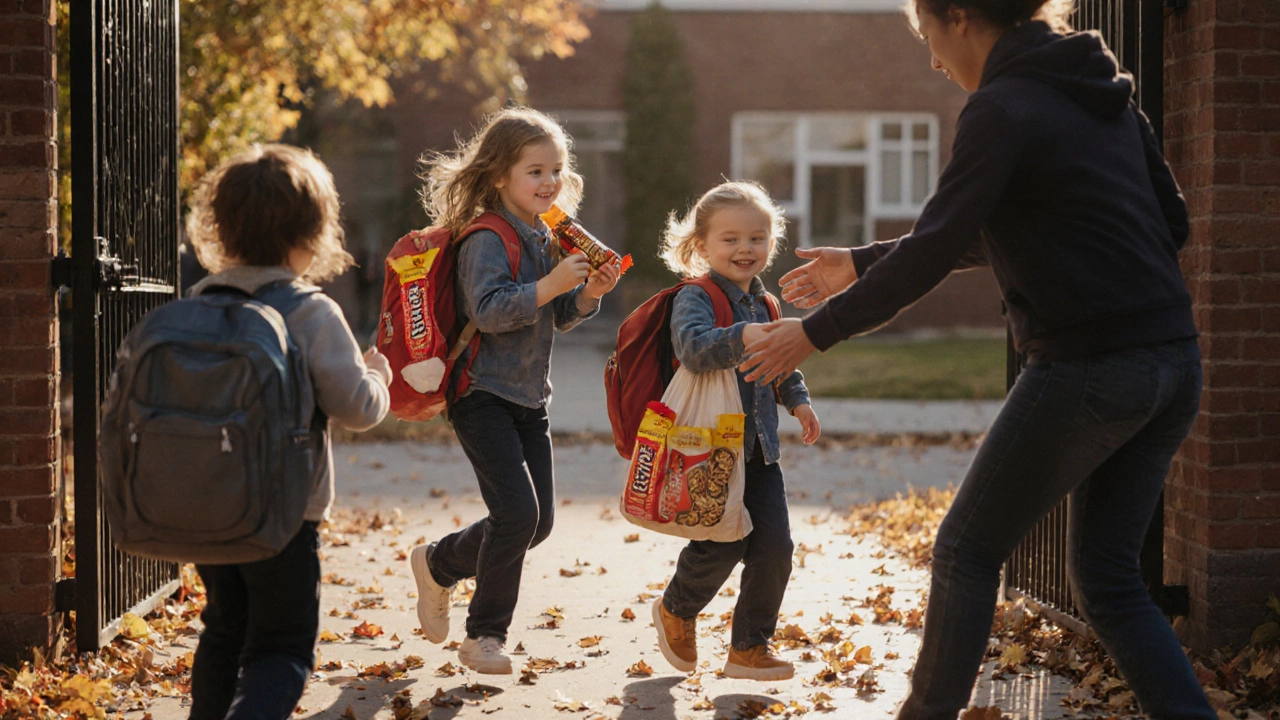After-School Hunger: Why Kids Go Without Meals and What You Can Do
When school lets out, many children don’t just head home—they head into after-school hunger, the lack of reliable access to food between the end of the school day and dinner. Also known as child food insecurity, it’s not about being too busy or forgetting lunch—it’s about families who can’t afford enough to eat after school hours. In Varanasi and beyond, this isn’t rare. Kids who get free or reduced-price meals at school often go 12 to 16 hours without food once classes end. No one talks about it much, but the signs are everywhere: tired eyes, trouble focusing, stomach aches, kids hoarding snacks or skipping activities because they’re too hungry to move.
This problem connects directly to child nutrition, the daily intake of food that supports a child’s physical and mental growth. Without balanced meals after school, kids miss out on protein, iron, and vitamins needed to learn, grow, and stay healthy. It’s not just about filling bellies—it’s about giving them the energy to finish homework, play safely, and sleep well. And it’s tied to after-school meals, structured food programs offered outside school hours to fill the gap. These aren’t fancy cafeterias—they’re simple setups: a hot plate, a volunteer, a table with bread, dal, fruit, or milk. But for a hungry child, it’s life-changing.
What makes after-school hunger worse is that it’s invisible. Unlike homelessness or extreme poverty, there’s no shelter line or charity sign. A child might look fine in clean clothes, but their stomach is empty. That’s why community outreach matters. Churches, local volunteers, and school groups in Varanasi are starting snack programs, partnering with food banks, and training parents to recognize the signs. They’re not waiting for government help—they’re acting now.
You don’t need a big budget to make a difference. A bag of rice, a few cartons of milk, or even just showing up to help serve food can shift the balance for a child who’s been going without. The posts below show real stories from people who’ve started after-school meal programs, fixed broken systems, and turned small acts into lasting change. You’ll find practical tips on what to donate, how to start a club, and how to work with schools without overstepping. These aren’t theories. These are actions taken by real people in real neighborhoods—and they’re working.

Why Are Kids So Hungry After School?
- Oct, 30 2025
- 0
Kids are often ravenous after school due to long gaps between meals, high energy use, and snacks that don't last. After-school clubs make it worse by extending the day without food. Simple fixes can help.
Categories
- Volunteering (40)
- Environment (36)
- Youth Programs (32)
- Charity Events (30)
- Homelessness (28)
- Charitable Organizations (26)
- Community Outreach (26)
- Community Support (18)
- Finance (12)
- Education (10)
Archives
- December 2025 (7)
- November 2025 (8)
- October 2025 (23)
- September 2025 (4)
- August 2025 (8)
- July 2025 (31)
- June 2025 (29)
- May 2025 (30)
- April 2025 (31)
- March 2025 (30)
- February 2025 (28)
- January 2025 (33)
- charity events
- after-school clubs
- community outreach
- community service
- charitable trust
- philanthropy
- volunteering
- environmental groups
- homeless shelters
- volunteer opportunities
- community engagement
- mental health
- charity
- student engagement
- charitable giving
- community help
- donations
- volunteer
- estate planning
- youth organizations